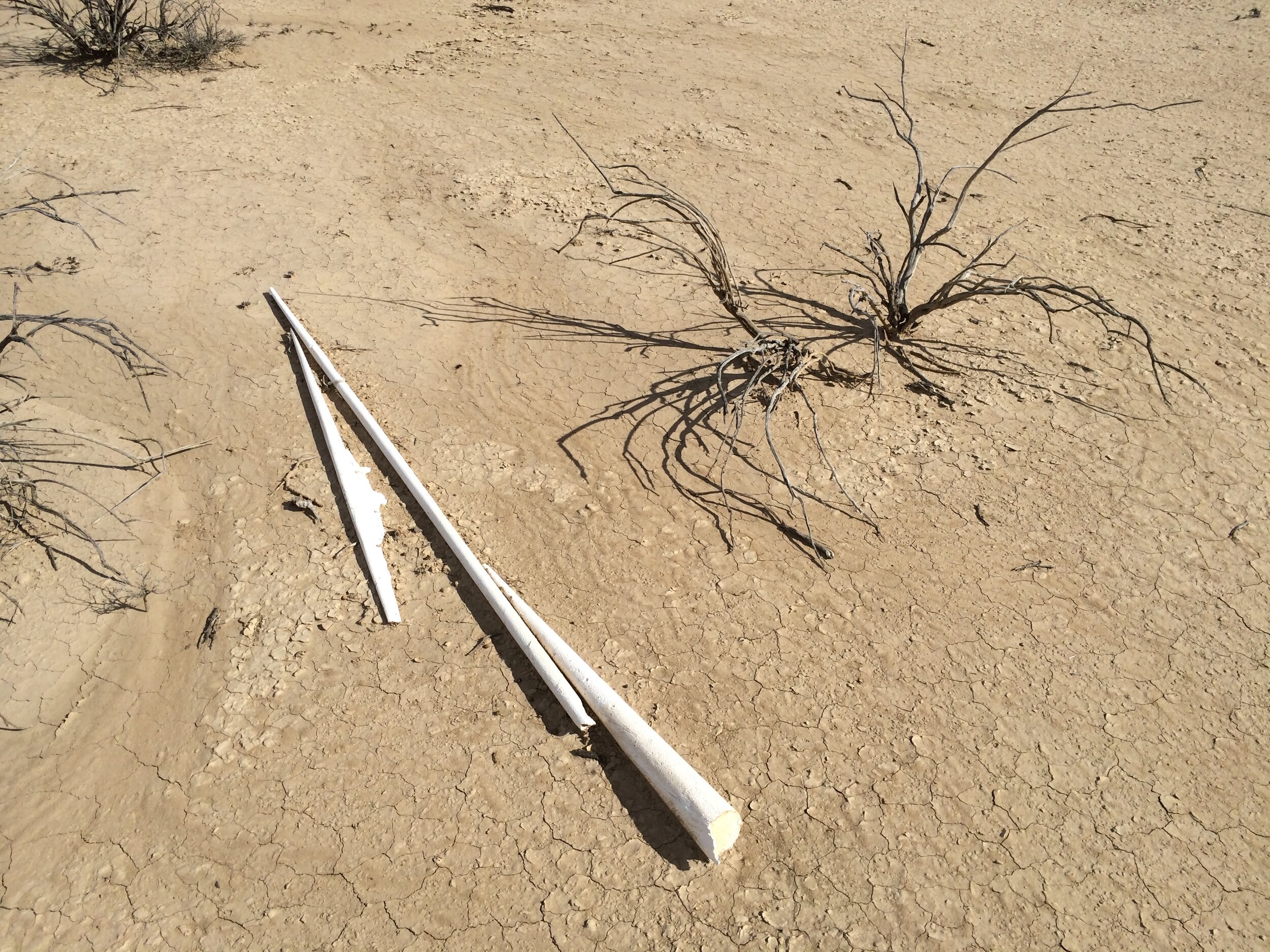Disruption Regime
2010–Present
Permanent Installation outside Terlingua, TX
Supported by Inde/Jacobs Gallery, Marfa TX
Cast Plaster on 5 acres
When I first visited the site, I focused on the ground, and the minuscule elevation changes in the land caused by water moving fast across the property. Seemingly flat, the water washing down a steep mesa a mile away created 1" steps down along fault lines in the ground. As opposed to other places in Terlingua, where one is surrounded by exposed rock, this land was a layered pile of sediment. Anything vertical in the ground: some burst of dried grass, creosote swallowed and suffocated by mud, served as a catchment system for potential nutrients of the landscape. This (anti) "midden" was scattered across 5 acres, and barely hanging on to whatever edge it could find. Animal dung, decaying cactus, seeds were caught in the depressions at the base of the 1" fault lines. I decided that my intervention would begin here, along these lines. Cast plaster plates, cones and limbs are placed along the faults, in order to interrupt the water and mud washing through. 18 months after my first act on the land, the plaster pieces are beginning to be swallowed by mud and shifting the course of the water to create micro alluvial fans.
I found the term Disruption Regime during my research on all things Terlingua a few months after beginning the project. In the context of the area, it refers to the overgrazing which permanently changed the structure of the ground plane, erasing the ability of the ground to withstand the summer rainstorms. Without a root system holding the ground together, the storms become floods, so that this layer of land is regularly on the move. For its inclusion of motion and potential I adopted the term for the project. I hope that this "ground drawing" disrupts the area back to something more life sustaining. This is a work in progress.






